Renewable Energy
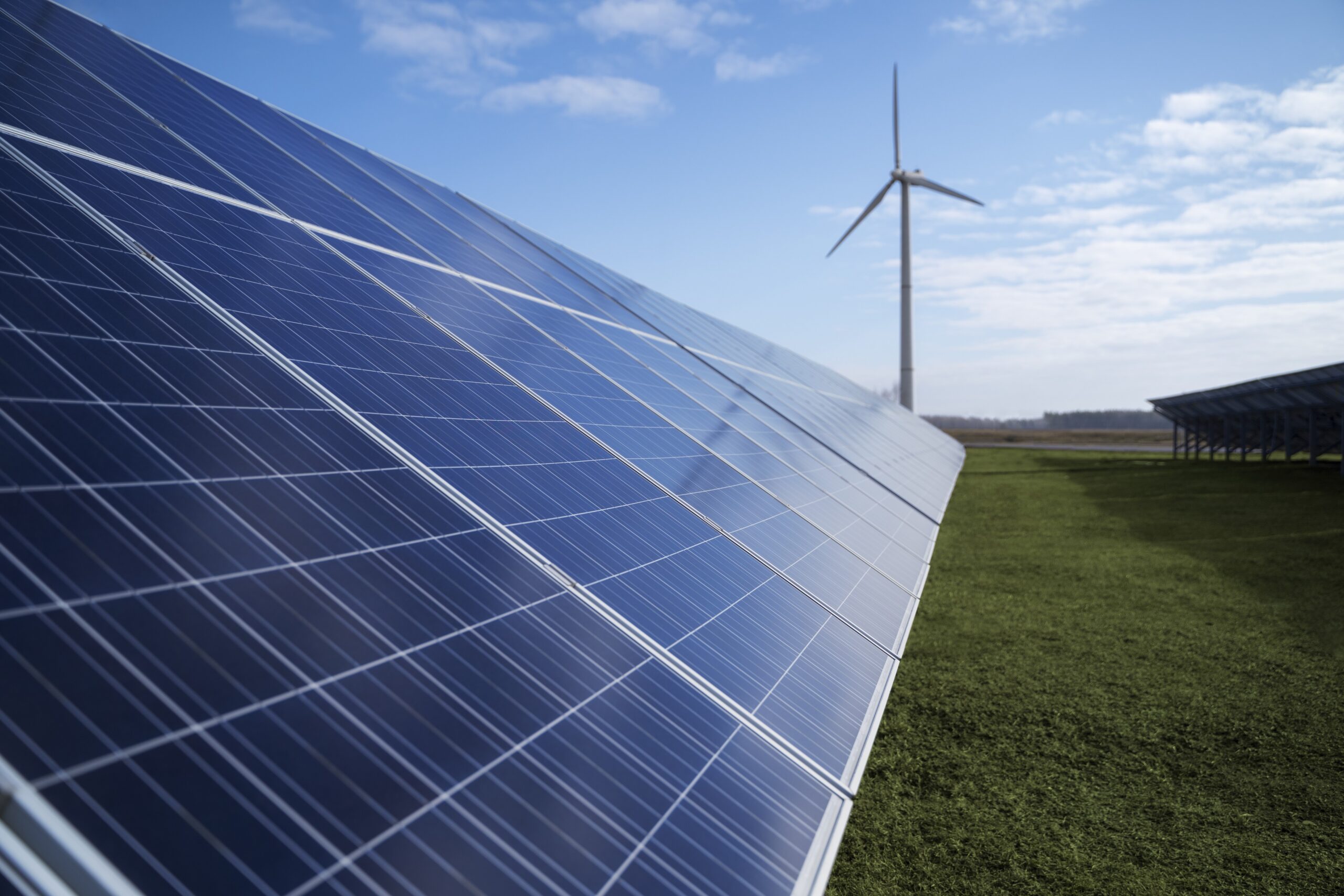
Renewable Energy
India’s overall goal is to install 500 GW of non-fossil fuel power by 2030, which would require 115 GW of additional solar capacity. This would mean that India would need to generate 32% of its energy from solar and 12% from wind by 2030. Solar energy holds the key to reducing carbon footprint and combating climate change on a global scale. By embracing solar, Large manufacturing Industries and Business Houses can ensure more sustainable energy systems while safeguarding the health of our planet for future generations. It is imperative that governments, businesses, and individuals collaborate to accelerate the adoption of renewable energy technologies and drive meaningful progress towards a carbon-neutral future.Solar EPC
Manufyn provides end-to-end services from the initial engineering and design phase to procurement of materials and equipment, and finally, installation and project management. From Liasoning to Commissioning, we plan the project meticulously in order to ensure that the project is delivered within the agreed timeline and without exceeding agreed budget!
Manufyn deals in all leading domestic as well as international brands available in the industry for Solar panels, Inverters and all other peripherals. Manufyn solar is committed to provide access to affordable, reliable and sustainable Solar energy to India and beyond.

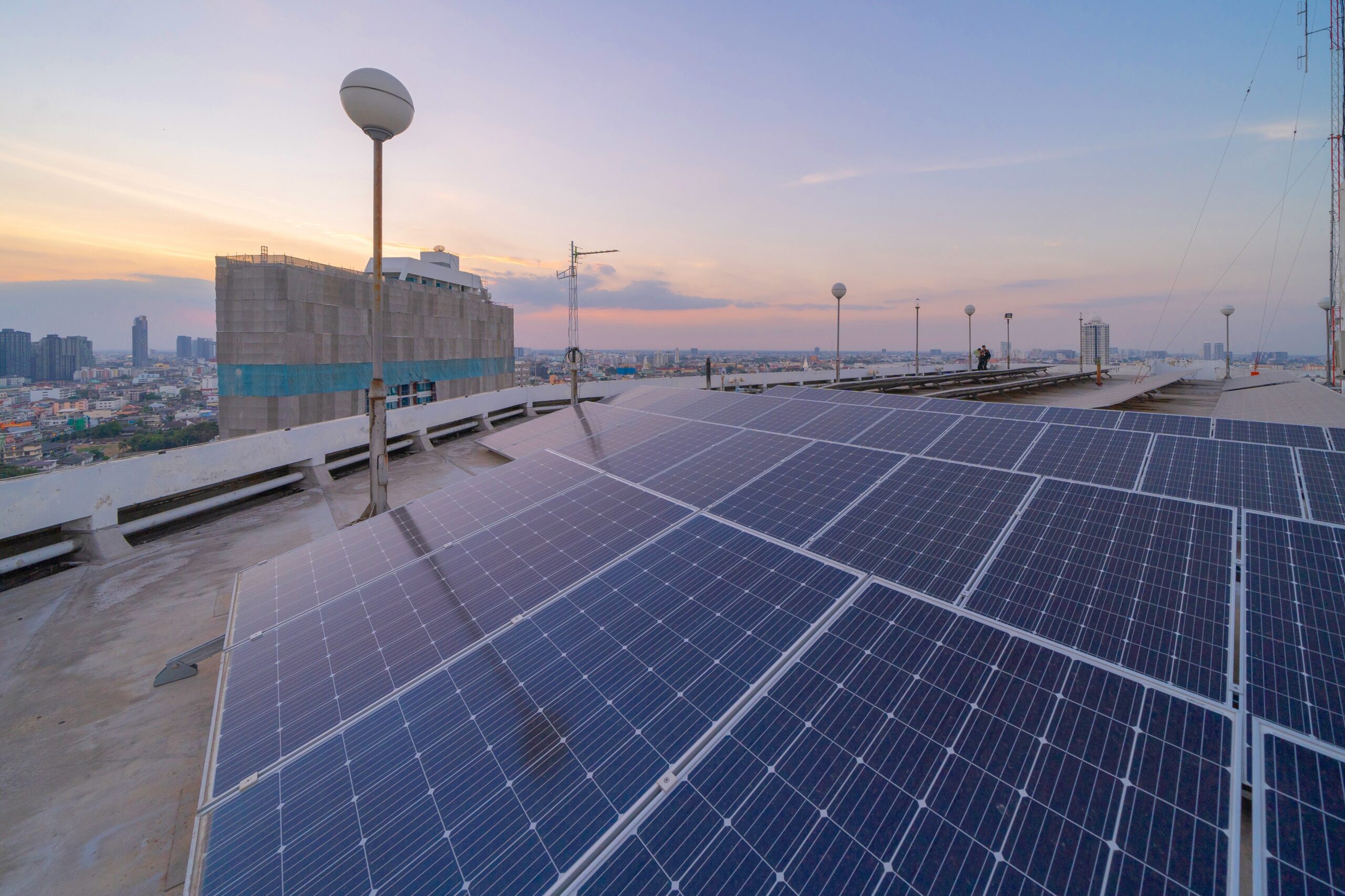
Commercial Rooftop
Commercial establishments such as Corporate offices, Malls, Hotels, Community centres etc. have huge energy consumption. Power tariffs for such commercial establishments are usually much higher compared to the same for other applications. Solar power plant is the perfect solution for those businesses who have space for generating their own electricity. Large commercial premises have ample space available at the roofs which can be utilised to generate energy.Commercial solar energy solutions are designed to help businesses reduce their energy costs which usually runs in lakhs of rupees! The solution typically involves installation of photovoltaic (PV) panels on the roof or grounds of a commercial building.
The benefits of commercial solar energy solutions include lower energy costs, improved energy efficiency, reduced carbon footprint and increased energy independence. The installation process is straightforward, with expert technicians conducting a site survey to assess the suitability of the location, before installing the panels and connecting them to the electrical grid.
If The Sun Is Free, Why Not Use It?
Industrial Rooftop
Solar energy has emerged as a vital solution for industries seeking to reduce their reliance on fossil fuels, mitigate carbon emissions, and enhance operational efficiency. This write-up explores the significant benefits and importance of solar energy for industries across various sectors.
Solar energy offers industries a cost-effective alternative to traditional grid electricity, enabling significant savings on energy bills over the long term. By generating electricity on-site through solar photovoltaic (PV) systems, industries can reduce or even eliminate their dependence on expensive grid power, thereby stabilizing energy costs and improving financial performance.
Embracing solar energy aligns with corporate sustainability goals and enhances brand reputation by demonstrating a commitment to environmental stewardship and responsible business practices. Solar energy adoption enables industries to meet regulatory requirements and comply with environmental regulations related to emissions reduction, renewable energy targets, and sustainability reporting.
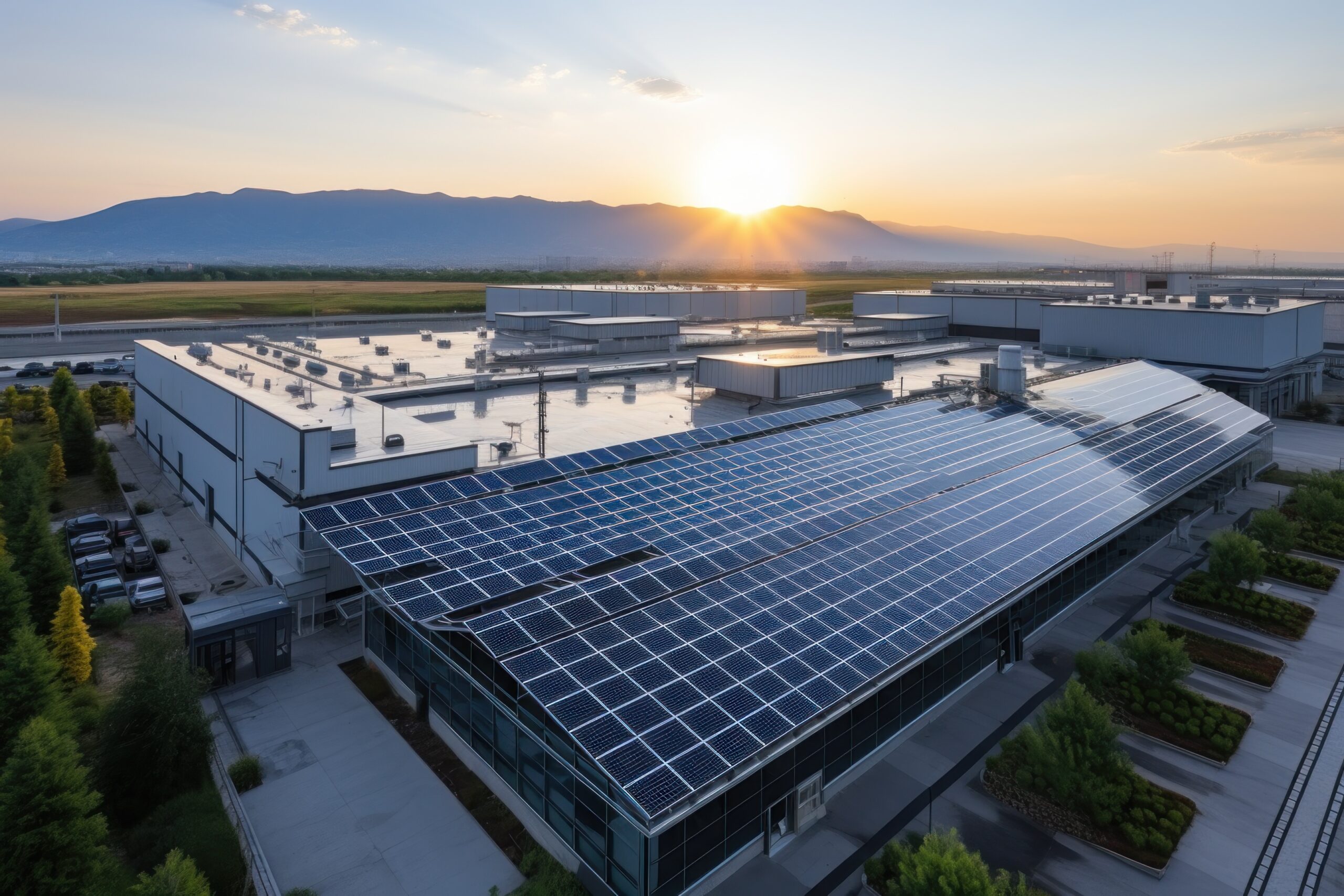

Group Captive
As the world grapples with the challenges of climate change and the need for sustainable energy sources, group captive solar power plants have emerged as a viable solution for businesses seeking to reduce their carbon footprint and energy costs. These plants allow multiple organizations to jointly invest in a solar power facility, providing an efficient and eco-friendly alternative to traditional energy sources.
Manufyn offers Ground Mounted Solar plant installation where multiple consumers come together to invest in and share the benefits of the common power plant. This model is particularly popular in regions with high energy costs and favourable solar conditions.
Benefits of Group Captive Solar Power Plants

Cost Savings
Reduced Energy Bills: By generating their own electricity, participating companies can significantly reduce their energy costs compared to purchasing power from the grid.
Tax Benefits: In many jurisdictions, investments in renewable energy projects are eligible for various tax incentives, including accelerated depreciation and income tax holidays.

Environmental Impact
Lower Carbon Footprint: Solar power is a clean, renewable energy source that produces no greenhouse gas emissions.
Compliance with Regulations: Many regions have strict regulations regarding carbon emissions and renewable energy usage. Investing in a group captive solar plant helps companies comply with these regulations.

Energy Security
Reliable Power Supply: Solar power plants provide a reliable source of electricity, reducing dependence on grid power and protecting against grid failures and energy price fluctuations.
Long-term Price Stability: The cost of solar power is relatively stable over the long term, unlike fossil fuels, which are subject to market volatility.

Corporate Social Responsibility
Sustainability Goals: Investing in renewable energy projects helps companies achieve their sustainability & corporate social responsibility goals, enhancing their brand image.
Community Benefits: Group captive projects can also provide economic benefits to local communities by creating jobs and promoting local development.
Open Access
Solar Open Access is a forward-thinking approach that empowers consumers to embrace clean energy without the need for on-site installations. By fostering sustainability, reducing costs, and providing energy independence, Solar Open Access stands as a beacon for a more resilient and environmentally conscious energy future. As technology advances and regulations evolve, this model is likely to play a pivotal role in shaping the future of energy consumption for businesses worldwide.
Solar Open access solution is the best suitable for those who have very high power consumption but no space to install Solar power plants within the premise.
Manufyn offers End to End solution for procurement of power from remote solar parks with support for Liasson, agreement for procuring power from generators etc.
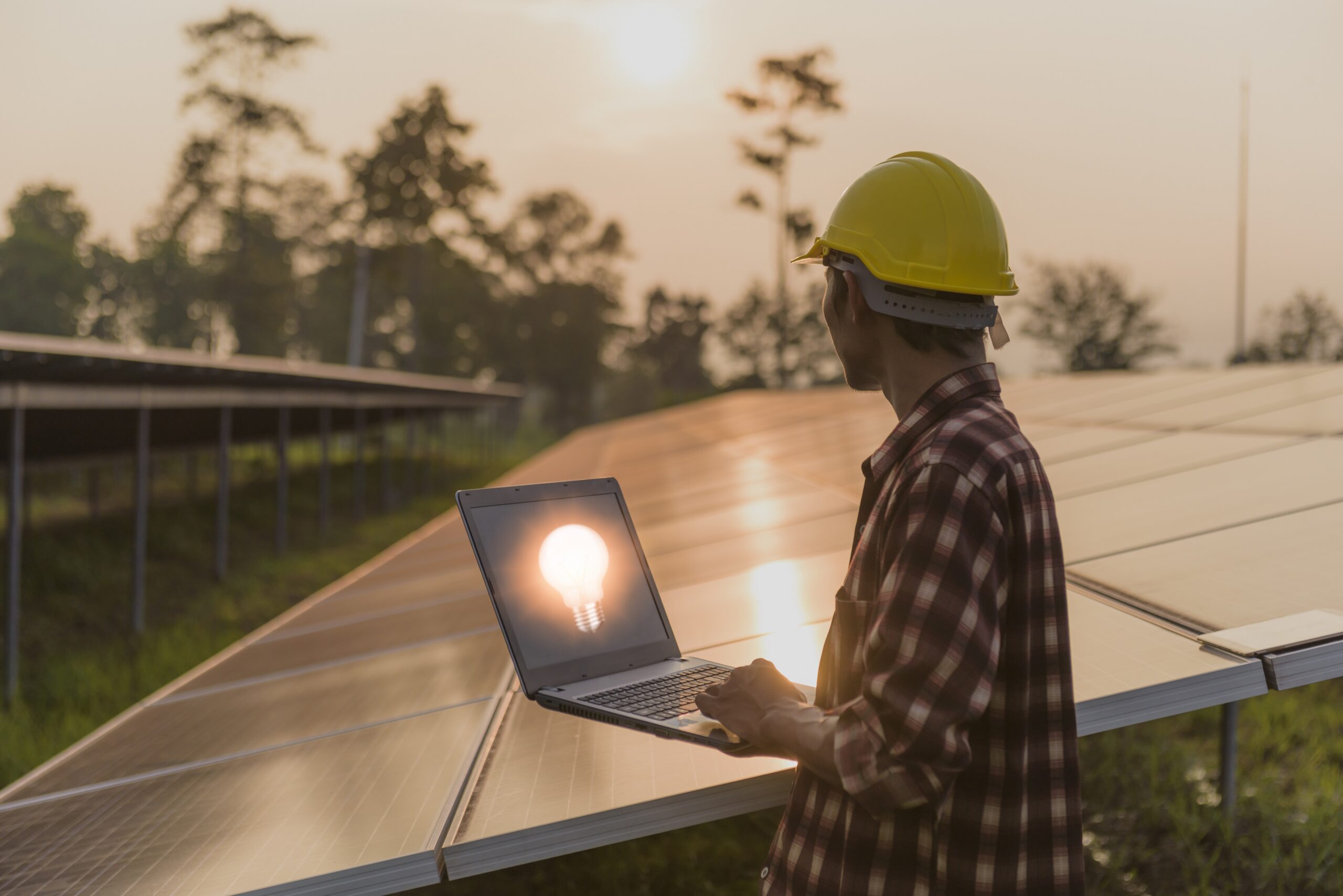
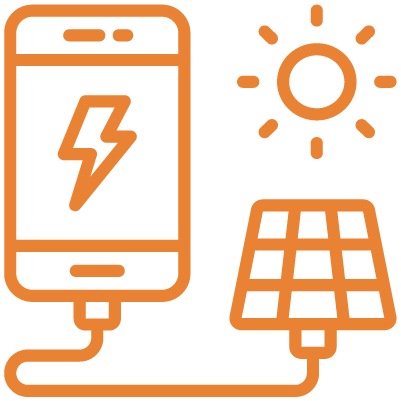
Remote Solar Procurement
Off-Site Solar Farms: Consumers can source solar energy from remote solar farms or projects located away from their premises.
No On-Site Installation: Unlike traditional solar installations on rooftops or premises, Solar Open Access eliminates the need for physical infrastructure at the consumer's location.

Power Purchase Agreements
Long-Term Contracts: Consumers can enter into Power Purchase Agreements with solar energy generators, securing a stable and often cost-effective supply of solar power for an extended period.
Predictable Pricing: PPAs typically involve fixed or predictable pricing structures, offering protection against fluctuations in conventional energy prices.
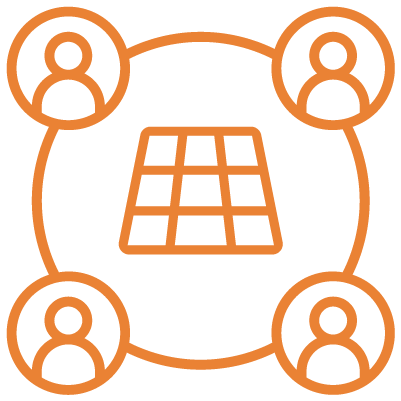
Community and Shared Models
Community Solar: Some Solar Open Access models involve shared solar projects, allowing multiple consumers to benefit from a single solar farm.
Solar Open Access is a revolutionary concept that provides consumers with the opportunity to harness solar power without the need for on-site installations.
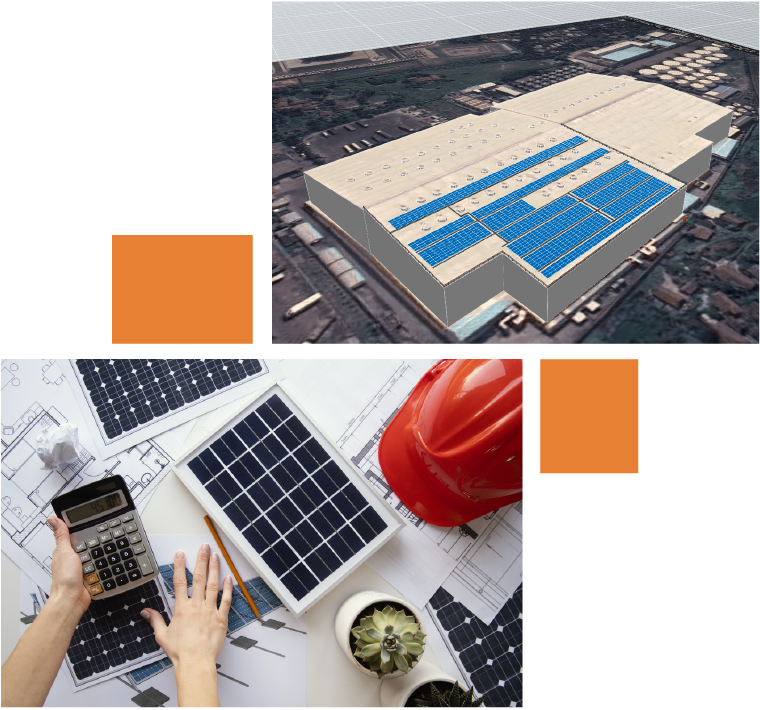
Design & Engineering
Designing the power plant system is the first and the most important part of the process.
Our team of engineers visits your site to understand your current consumption pattern and your future requirements. You just have to share your current energy bill for better estimation of the energy demand.
Engineering team carefully designs and develops the plant considering the available space, constraints on site etc.
After conducting a complete feasibility study of required capacity and availability of space, we would share a detailed 3D design which will help you visualize the plant on your roof.
Site Assessment and Feasibility Study:
This involves a thorough assessment of the proposed site to evaluate its suitability for solar installation. Factors like solar insolation, shading, and terrain are considered.
A detailed feasibility study is conducted to analyze the economic and technical viability of the project. This includes financial modeling, return on investment calculations, and an assessment of regulatory requirements.
Engineering, Procurement and Consulting
Manufyn provides end-to-end services from the initial engineering and design phase to procurement of materials and equipment, and finally, installation and project management. From Liasoning to Commissioning, we plan the project meticulously in order to ensure that the project is delivered within the agreed timeline and without exceeding agreed budget!
Manufyn deals in all leading domestic as well as international brands available in the industry for Solar panels, Inverters and all other peripherals.
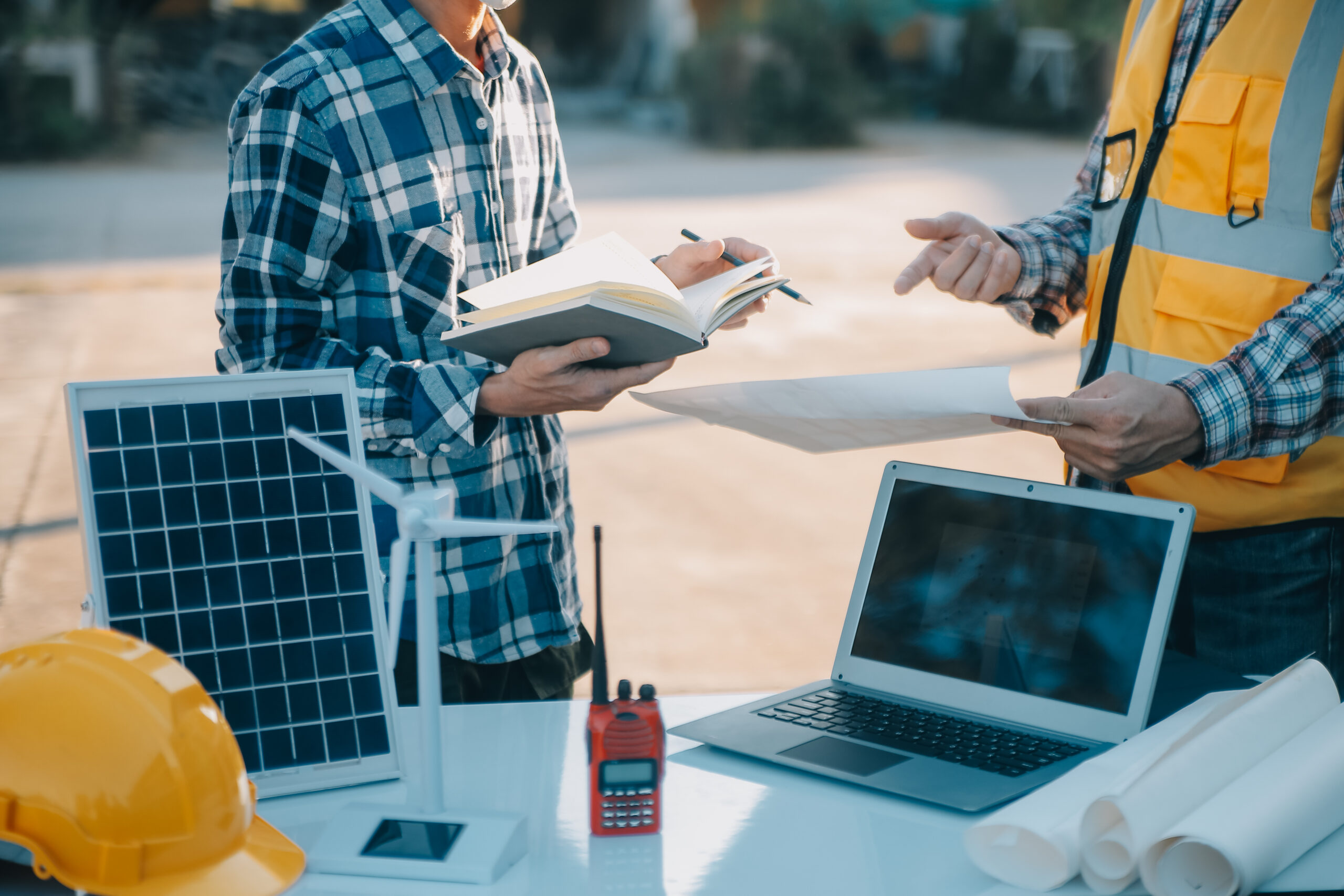
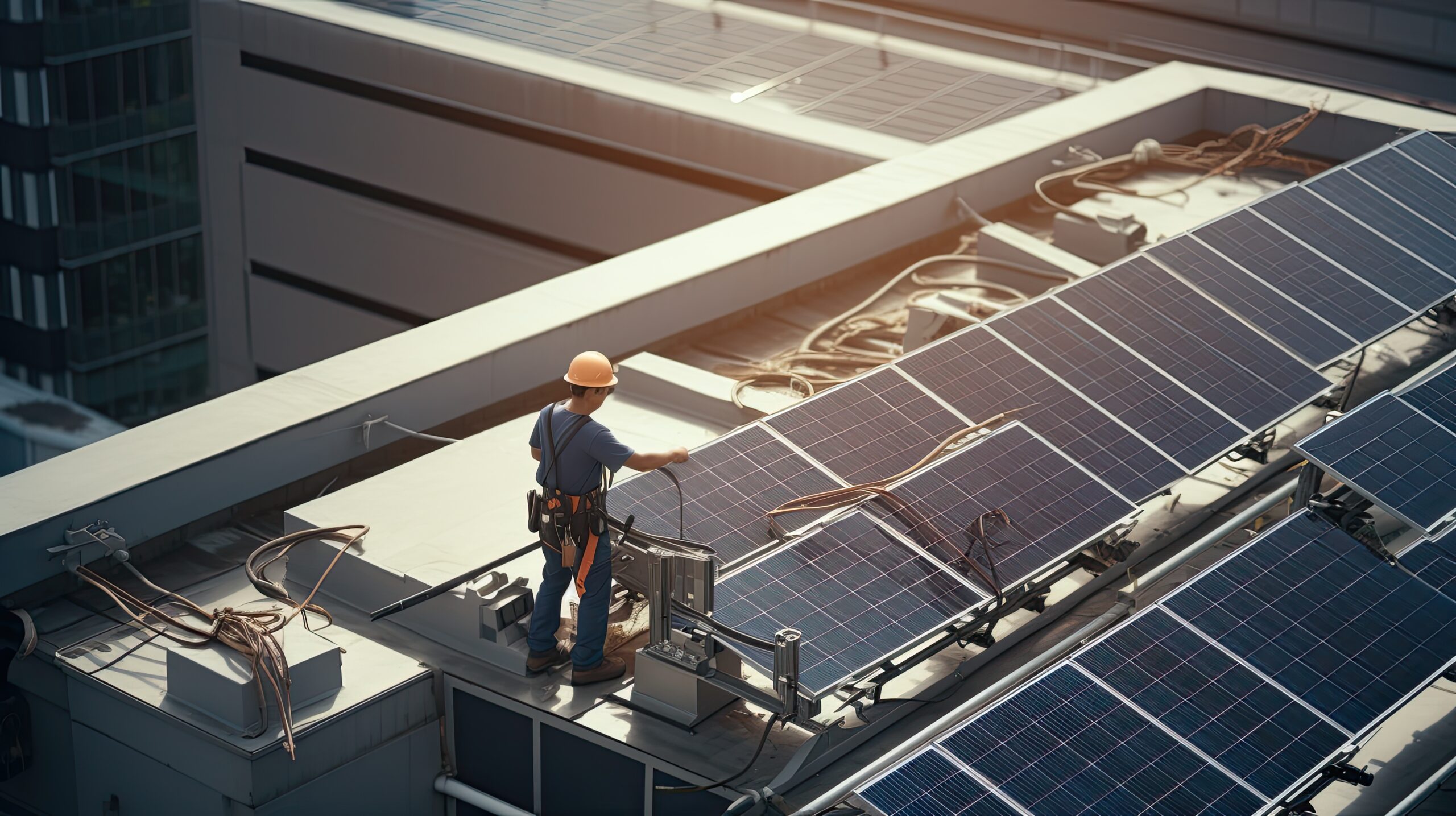
Installation and Commissioning
The installation and commissioning of solar power plants are critical steps in the journey towards sustainable energy. Professional services in these areas ensure that solar installations are efficient, safe, and reliable, providing maximum return on investment and contributing to a greener future. As the demand for renewable energy grows, the importance of expert installation and commissioning services cannot be overstated, paving the way for a successful transition to solar power.
Commissioning Services
1. Construction
- Mounting System Installation: The first physical step is to install the mounting systems, which can be ground-mounted or roof-mounted depending on the project.
- Panel Installation: Solar panels are then mounted on the structures and securely fastened.
- Electrical Wiring: All electrical connections are made, including wiring the panels to inverters and setting up the grid connection.
2. System Testing
- Electrical Testing: Comprehensive testing of electrical connections to ensure there are no faults and that all connections are secure.
- Performance Testing: Measuring the initial performance of the system to ensure it meets the design specifications and expected energy output.
3. Grid Connection
- Interconnection: Coordinating with local utility companies to safely and legally connect the solar power system to the grid.
- Compliance: Ensuring that the system complies with all local, state, and national regulations and standards.
4. Monitoring Systems
- Installation of Monitoring Tools: Setting up monitoring systems that track the performance of the solar power plant in real-time. This can include software and hardware solutions that provide data on energy production, system efficiency, and operational status.
- Data Integration: Integrating the monitoring systems with existing infrastructure to provide seamless access to performance data.
O&M
The operation and maintenance (O&M) of a solar power plant is crucial for ensuring its long-term performance, efficiency, and durability. Proper O&M practices can maximize energy yield, minimize downtime, and extend the lifespan of the solar installation.
Manufyn offers annual maintenance contracts (AMC) for rooftop solar plants and an onsite team for ground mounted plants.
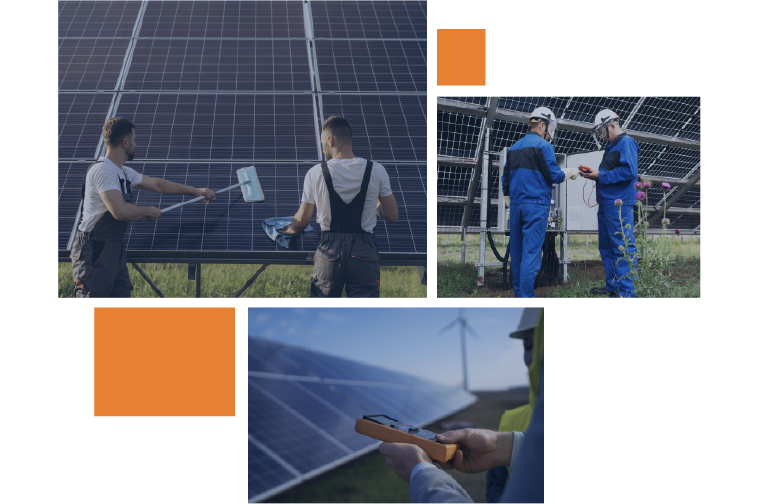

Performance Monitoring
Manufyn uses state of the art technology to monitor systems to collect and analyze real-time data on the performance of the solar power plant. Evaluate the performance data to identify any deviations from expected energy production and troubleshoot issues promptly.

Regular Inspection and Cleaning
Manufyn team conducts routine visual inspections to identify any physical damage, loose connections, or anomalies in the solar panels and other components.
Regular cleaning schedule is prepared for solar panels to remove dust, dirt, and debris that can reduce efficiency. This is especially important in arid or dusty environments.

Performance Guarantees and Service Level Agreements
Manufyn offers performance guarantees and service level agreements (SLAs) to ensure the reliable operation and performance of the solar power plant which include guarantees on energy production levels, system uptime, and response times for maintenance and repairs, providing peace of mind to businesses and mitigating performance risks.

Preventive Maintenance
Conduct preventive maintenance checks on inverters, transformers, and other electrical components to detect and address potential issues before they escalate.

Electrical System Maintenance
Monitor and maintain inverters, checking for proper functioning and addressing any faults. Regularly inspect and test cables for wear, damage, or degradation. Replace faulty cables as needed.

Data Management and Reporting
Manufyn maintains comprehensive records of maintenance activities, inspections, and equipment history. Generate regular reports on system performance, maintenance activities, and any incidents for documentation and analysis.
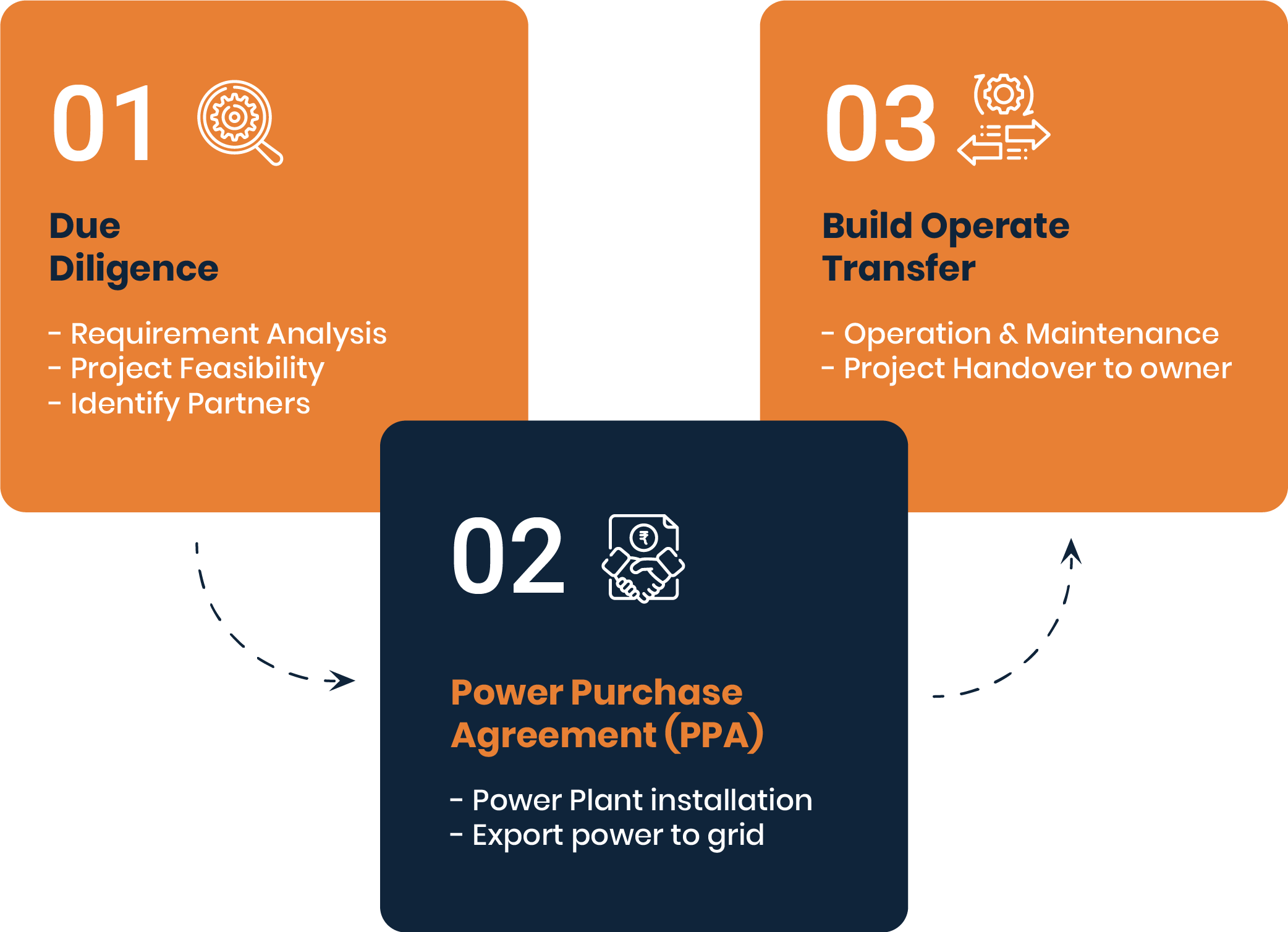
Project Financing
Manufyn has tie ups with leading banks and financial institutes which offer funds at affordable rate of interest following a simple process.
We are also empanelled by the Ministry of New and Renewable Energy (MNRE) for offering projects with subsidy from the central government.
Commercial Types
- Capex Model
- Opex Model
As solar technologies continue to evolve and become more cost-effective, the CAPEX model remains a compelling option for organizations committed to harnessing the power of the sun and driving the transition towards a more sustainable energy future.
The capital expenditure (CAPEX) model for solar power plant installation involves businesses and industries making upfront investments to purchase and install solar panels and related equipment on their premises. This model offers organizations greater control and ownership over their solar energy infrastructure, allowing them to realize long-term cost savings, energy independence, and environmental benefits. This write-up delves into the key components and advantages of the CAPEX model for solar power plant installation.
While the upfront investment in solar power plant installation may be significant, businesses can realize substantial long-term cost savings over the project's lifespan. By generating electricity from solar energy, businesses can offset or even eliminate their dependence on grid electricity, reducing energy bills and hedging against future electricity price increases.
The CAPEX model offers businesses the potential for a strong return on investment (ROI) through energy cost savings, revenue generation from excess electricity sold back to the grid (if applicable), and various financial incentives.
Governments, utilities, and other entities often offer incentives such as tax credits, rebates, grants, and renewable energy certificates (RECs) to encourage solar adoption and support renewable energy initiatives.
Environmental Benefits and Corporate Social Responsibility (CSR):
By investing in solar power plant installation, businesses demonstrate a commitment to environmental stewardship and corporate social responsibility (CSR).
On-site solar installations can serve as a reliable and decentralized energy source, ensuring uninterrupted power supply during grid outages, emergencies, or disruptions.
The OPEX model for solar power plant installation presents businesses and industries with a compelling opportunity to access clean, renewable energy with minimal upfront investment and predictable operational expenses. By partnering with Manufyn, businesses can leverage the advantages of the OPEX model to reduce energy costs, enhance sustainability, and achieve their long-term financial and environmental goals. As the demand for clean energy solutions continues to rise, the OPEX model stands poised to play a significant role in accelerating the adoption of solar power and driving the transition towards a more sustainable energy future.
The operational expenditure (OPEX) model for solar power plant installation offers businesses and industries a cost-effective and hassle-free approach to harnessing solar energy. Unlike traditional capital expenditure (CAPEX) models, where the upfront investment is significant, the OPEX model allows organizations to deploy solar power systems with minimal upfront costs and predictable operational expenses over the project's lifespan.

Manufyn owns and operates the solar power plant, assuming responsibility for project development, installation, and ongoing maintenance.
Businesses enter into a power purchase agreement (PPA) or lease agreement with Manufyn, allowing them to access solar energy without the need for upfront capital investment.
Under the OPEX model, businesses can avoid the significant upfront costs associated with purchasing and installing solar panels and related equipment.
Instead, they pay a predetermined rate for the electricity generated by the solar power plant, typically at a lower rate than your DISCOMs, providing immediate cost savings and budget predictability.

